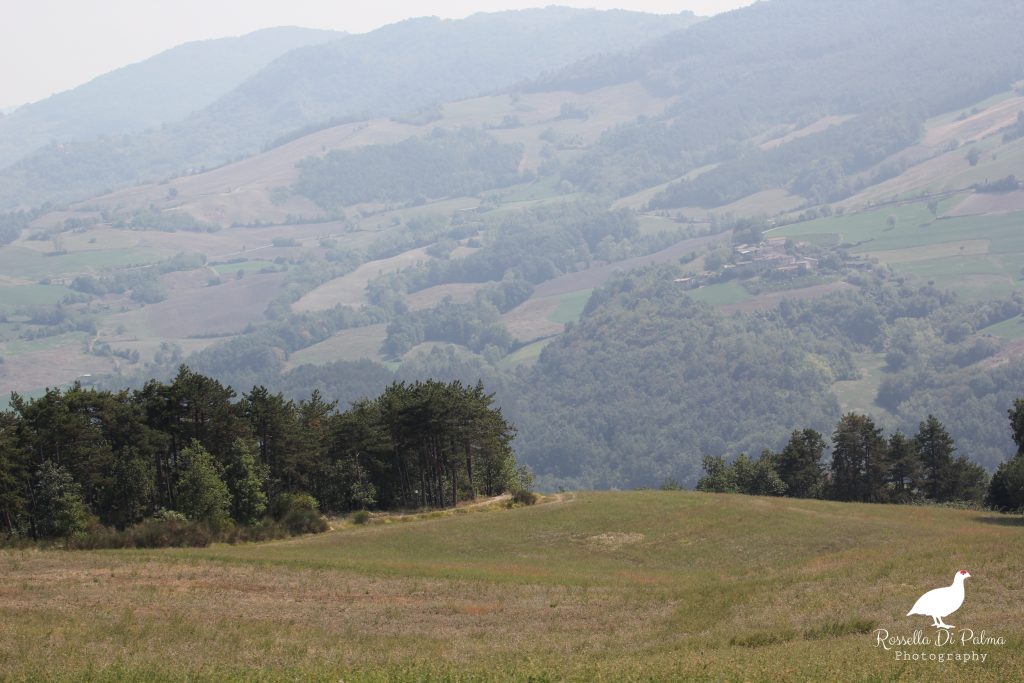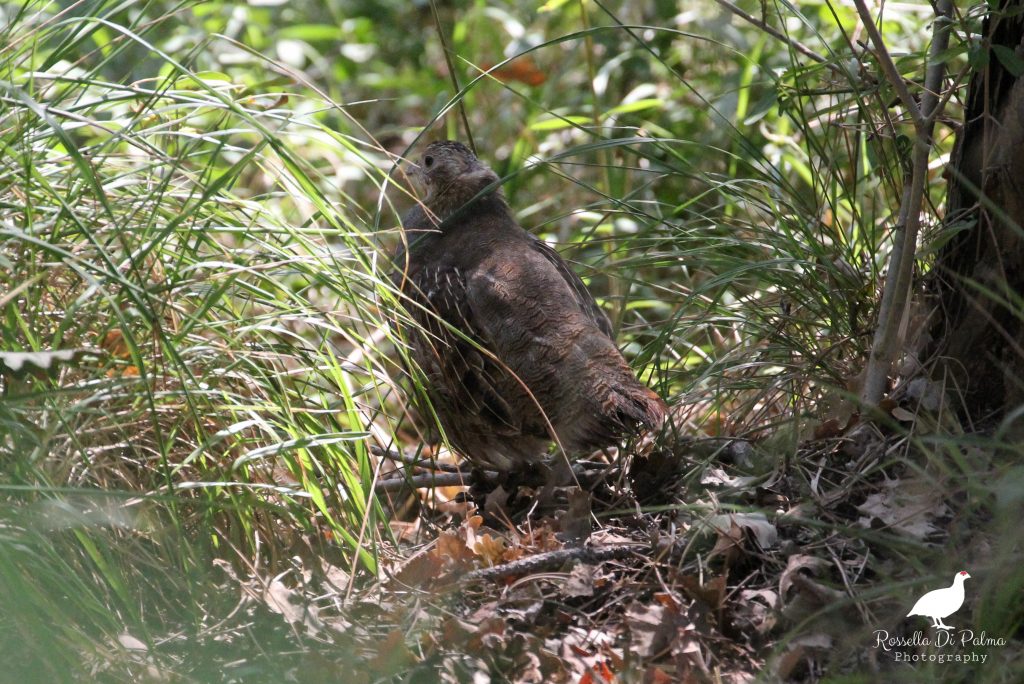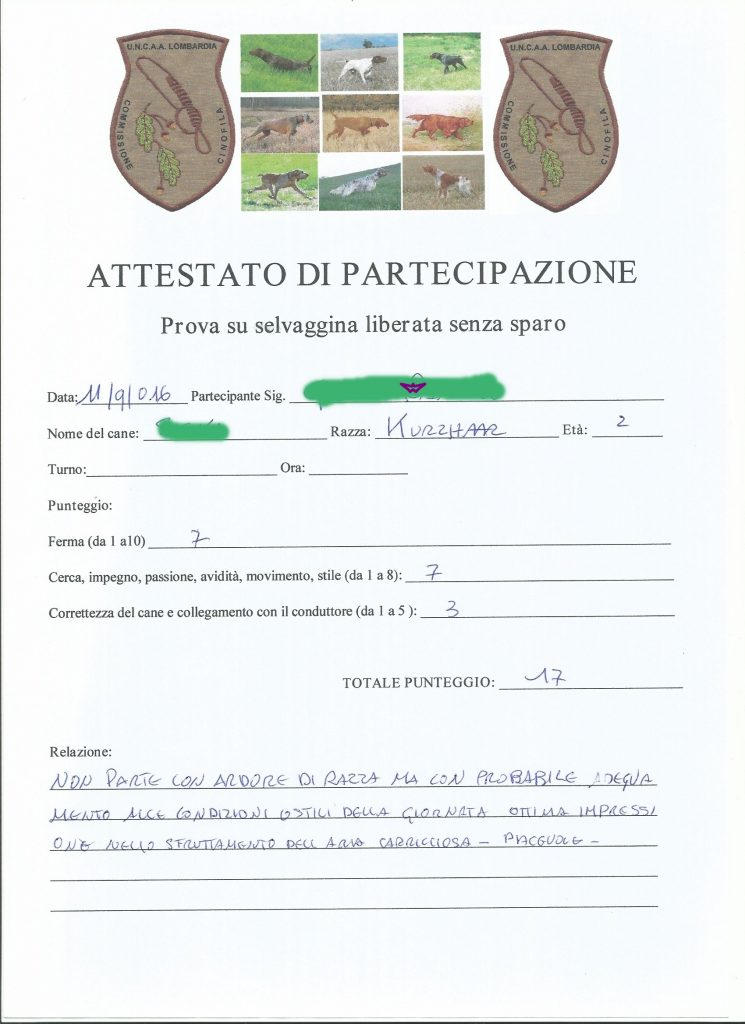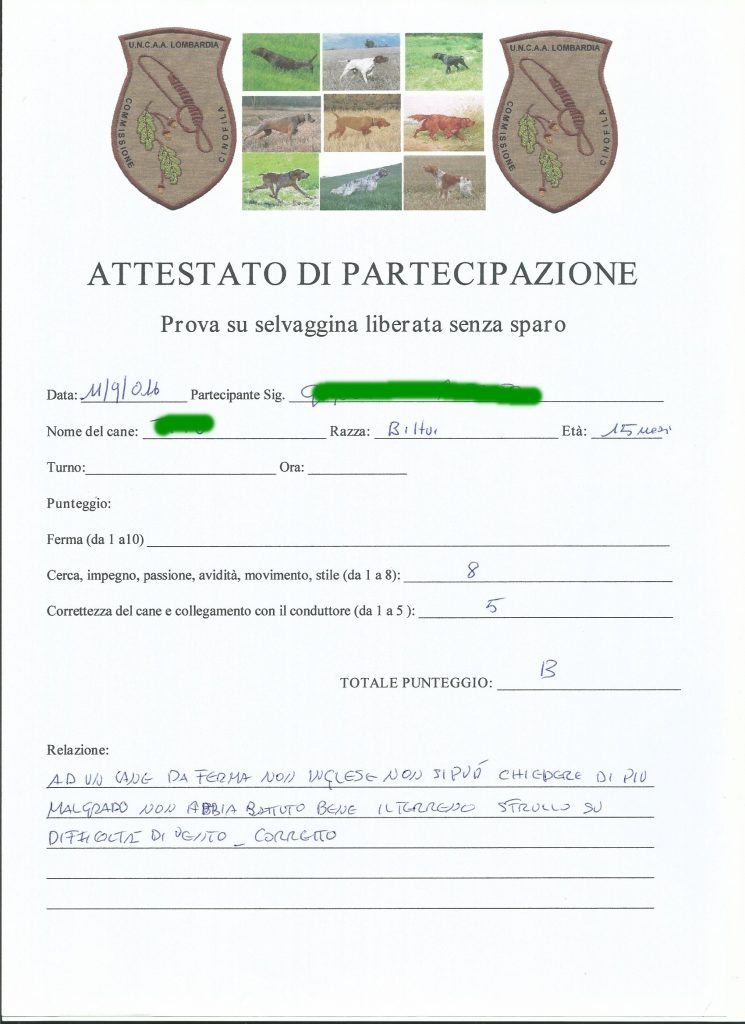UNCAA – ST. Hubert Academy Field Trial
UNCAA – Accademia di S. Uberto Pointing Dogs Trial
Last June I was invited to a trial organized by the UNCAA (National Union of Appennines and Alps Hunters) – ST. Hubert Academy, but the trial was later cancelled and re-scheduled for September. The grounds and the birds changed as well, the trial was going to be held at the Ruino Estate, on the highest hills of Oltrepo’ Pavese , and the dogs were going to be assessed on grey partridges, no longer on quails Those who know me, are well aware of how much I love Ruino as I spent about eight years regularly shooting and handling English Setters there. Ruino’s grounds are perfect for pointing dogs, and they are wide and open enough to make any dogs belonging to a British pointing breed happy.

In the e-mail I received, there were only a few details on the trial. It was created specifically for those associated to the UNCAA-St. Hubert Academy, nevertheless it was open to everyone. As I did not know what was going to happen exactly, I forwarded the invitation only to a few people, next time I will be more generous!
By choosing to be there, I gathered more details. The trial was open to all the pointing dogs, and most of the competitors were HPRs, you will soon understand why. Dogs were requested to behave like in a ENCI/FCI official trial but, big difference, eliminating any dogs was not on the menu. Major or eliminating faults were going to be written down but, in some cases, especially if the dog was a young one, the judge could decide to let him continue his run, in order to assess his natural qualities. The trial’s aim, indeed, was not to nominate a winner but to see, assess and describe each dog natural qualities. At the end of the trial, each dog was going to receive a written evaluation (like it is done in any FCI trials) and a score. Scoring had German hunting trials as a model, this explains why we had so many German HPRs competing, some of which had already been tested at VJP, HZP. VGP, German Puppy Derby and Solms). As you might see looking at the evaluation form, natural qualities were considered very important( Ferma = Point; Cerca, impegno, passione, avidità, movimento e stile = Quartering, dedication, passion, avidity, movement and style; Correttezza del cane e collegamento con il conduttore = Obedience/training and connection/cooperation with the handler).

Organizers were expecting 10-15 dogs to compete but 25 showed up: The dogs had different ages (many were around one year old) and very different backgrounds and training. There were some experienced dogs who regularly attend trials and dogs, without formal training, which are used for rough shooting exclusively. According to the judge Ivan Torchio (whose mentor had been Giacomo Griziotti), all the dogs, including the best one, need to explore the ground with more “logic”. He explained the difference between exploring the ground during a “quail” trial (dog should quarter very regularly (left/right), in a very geometric pattern and not miss any ground) and during a “wild bird” trial (the dog has more freedom but still….) and concluded saying that all the dogs he saw need to be refined under this aspect. Some dogs proved to be highly skilled and perfectly trained, they waited for the handler on point, roaded on command without being touched, remained steady, dropped and came back when asked to and so on…) others were wilder, some of them were very young and some others paid for their handler’s lack of skills. Several humans, indeed, made awful mistakes: a man roaded and produced in behalf of his dog (then he-the man – literally ran after the bird….); another one insisted on making the bird fly by beating the ground; some kept yelling at the dog… A few handlers asked if they could keep a collar and a check cord on the dog for safety purposes, or if they could pick up the dog before the bird flushed: they were given permission to do so but, of course, this was taken into account in the final evaluation. Silent and “professional” handling, instead, though not compulsory, was appreciated. Two pups wanted to enter the trial as well and they were asked to find a planted quail while on a check cord. They both found it and the GWP was so careful and concentrated that she remained steady to wing, without having ever been trained for that.

The grounds were those typical of the High Appennines, alfalfa fields, furrow fields, bushes and so on. It was very hot, late in the morning we reached temperatures above 30 degrees, wind was weak and kept changing its direction making the dogs’ job very difficult. Each dog was given ample opportunities to find birds, but a few failed and some, given the difficult conditions, eventually bumped into birds. The organizers plan to have this trial again next summer as it is a very nice way to keep an eye on the most experienced dogs, and to introduce shooters and pet owners to trials.
Briony did very well. She found a grey partridge and a quail. Produced nicely and remained steady. She got the highest possible score and the judge wrote that her run was at the highest levels for quartering, speed and use of the ground/wind… He would have liked more refined castings (left and right) and that obedience could be more automatic (indeed it was me telling him that she dropped the second time I whistled, not the first!). He concluded saying that she is an extremely high quality dog.
Handlers Opinions:
Sara Orlandi (GSP): This was the second trial organized by the Accademia di St. Uberto that I attended. The previous one was the 24 hours deer tracking trial (FCI recognized) organized in Cecima, this time we are in Ruino… another wonderful place! It was great to see my dog working which such a determination and then receive such a positive written critique by “The Professor” Ivan Torchio! We later had a very tasty lunch with much game and we share opinions on dogs while eating all together. I am likely to show up again at the next trial!
Daniele Malacalza (Spinone Italiano): I felt at ease, people were nice, friendly and funny. Ivan proved to be exremely skilled, more than I expected. Dogs were evaluated differntly than they use to be during ordinary trials.
Note: St.Hubert Academy does not take its name after ST.Hubert type trials (as some misunderstood). It is school (hence the name academy) which organizes classes on shooting (including woodcock counting), stalking, deer tracking, hound handling, wildlife management and game keeping through Italy. Classes are open to everybody wishing to gain expertise in these fields, some of the classes offer certification which are officially recognized by the Italian government and by several EU countries.


